Viewing: Blog Posts Tagged with: Indian, Most Recent at Top [Help]
Results 1 - 14 of 14
Blog: Creative Whimsies (Login to Add to MyJacketFlap)
JacketFlap tags: color pencil, penguin, indian, acrylic painting, baby penguin, Add a tag
Blog: The Open Book (Login to Add to MyJacketFlap)
JacketFlap tags: west indies trinidad, food, recipes, Resources, Caribbean, Indian, Southeast Asia, Musings & Ponderings, roti, Add a tag
In this post, our marketing intern Keilin Huang dishes on rotis around the world:
In one of our new LEE & LOW books released this October, Drummer Boy of John John, a young Trinidadian boy named Winston dreams of being in the best band in the Carnival parade, so he can get some of the Roti King’s famous rotis. As Winston puts it, “Carnival jus’ ain’t right without a roti.”
Winston craves these “folded pancakes filled with chicken and secret herbs and spices,” but what exactly is a roti? The word roti means “bread” in Hindi, Urdu, most other North Indian languages, and Malay, and is essentially a round, flat, bread that is cooked on a griddle:
Roti is unleavened, meaning that no rising agents are used, so most recipes involve just mixing water and flour together. Oftentimes, rotis are stuffed with vegetables, meats, curries, or spread with butter.
Roti is a staple in three main regions: India, the West Indies (Trinidad, Tobago, Guyana, and Suriname), and Southeast Asia (Indonesia, Malaysia, and Singapore). In India, roti is often accompanied with cooked vegetables or curries, but it can also be spread with “ghee,” a clarified butter.
Similarly, in the West Indies, rotis are paired with different combinations of vegetables, herbs, and meats. In Drummer Boy of John John, the Roti King is probably making another popular roti called the “wrap roti.” The wrap roti is essentially the same as a normal roti, except it’s folded up with a curry stew inside of it.
Southeast Asian countries often pair rotis with sauces and stews, using the bread as a dipping tool. And people with a sweet tooth will especially appreciate these rotis with ice cream or “kaya” (a rich, creamy, coconut jam):
For those of you who are aspiring chefs (or just need something easy and delicious to eat!), here’s a roti recipe for Indian roti from our book Hot, Hot Roti for Dada-Ji. If you want to try Caribbean roti like what Winston eats in Trinidad, try this recipe. And of course, if you have your own family roti recipe, we’d love to hear it!
Filed under: Musings & Ponderings, Resources Tagged: Caribbean, food, Indian, recipes, roti, Southeast Asia, west indies trinidad
Blog: PaperTigers (Login to Add to MyJacketFlap)
JacketFlap tags: India, Indian, The Third Eye, Mahtab Narsimhan, The Silver Anklet, Cultures and Countries, The Deadly Conch, Indian diaspora, India and the India diaspora, children's literature from India and the Indian diaspora, The Tiffin, Her Mother’s Ashes Part 3, Piece by Piece: Stories About Fitting Into Canada, Add a tag
A few months ago while at my local library I came across a copy of the children’s book The Tiffin by Mahtab Narsimhan. I was running late a nd didn’t have time to read the book flap but because I was so intrigued by the cover I checked the book out. Later that night I began to read The Tiffin and was instantly hooked! Set in India the book tells the story of the rare time when a tiffin (a box lunch delivered by a dabbawalla) goes astray. The tiffin contained an important note which when lost results in devastating consequences. The Tiffin is a book that can be judged by it’s intriguing cover and I was up until the wee hours of the morning reading it from start to finish.
nd didn’t have time to read the book flap but because I was so intrigued by the cover I checked the book out. Later that night I began to read The Tiffin and was instantly hooked! Set in India the book tells the story of the rare time when a tiffin (a box lunch delivered by a dabbawalla) goes astray. The tiffin contained an important note which when lost results in devastating consequences. The Tiffin is a book that can be judged by it’s intriguing cover and I was up until the wee hours of the morning reading it from start to finish.
The next day, a wee bit sleep deprived, I spent some time on the computer researching the book and learning more about author Mahtab Narsimhan. Originally from Mumbai, India, Narsimhan now resides in Toronto, Canada. The catalyst that started her writing career was a tragic one. In 2003, devasted by her father’s death she began to write down her thoughts and memories of their life in India. These scribblings, along with her love for fantasy, morphed into the idea of writing a novel and her first book The Third Eye was published in 2007. Sequels The Silver Anklet followed in 2009 and The Deadly Conch in 2011. Narsimhan has also published two anthologies Piece by Piece: Stories About Fitting Into Canada (Penguin Canada, 2010) and Her Mother’s Ashes Part 3 (TSAR Publications, 2009).
The Tiffin has been nominated for several awards and is shortlisted by the Canadian Library Association for the 2012 Book of the Year for Children Award. If you haven’t already read it, I highly recommend you add it to your “Must Read” list. Check out this wonderful review of the book by West Vancouver librarian Shannon Ozirny (who you may remember was the MC at the VCLR Serendipity Conference that Marj and I presented at in Vancouver early this year). Shannon’s review was printed in the November 2011 issue of Quill and Quire and is partially reprinted here with Quill and Quire’s permission.
The Tiffin
by Mahtab Narsimhan
(Dancing Cat Books, 2011)
Reviewed by Shannon OzirnyIn the context of children’s literature, the term “other worlds” often connotes places that are purely imaginary and only reachable by an enchanted cabinet or peculiarly numbered train platform. But Toronto-based, Silver Birch Award–winning author Mahtab Narsimhan (the Tara Trilogy) introduces children to the “other world” of the dabbawallas of her native Mumbai. Despite being very real and accessible by traditional modes of transport, this world will be just as awe-inspiring for North American young people as any fantasy realm could hope to be (click here to read more!)
And here is the book trailer
Blog: Litland.com Reviews! (Login to Add to MyJacketFlap)
JacketFlap tags: primary, wild west, young children, western art, west, parent, pioneer, reader, special education, teach, south, virtue, secondary, children's, cowboy, juvenile, homeschool, classroom, children's lit, Indian, character education, guns, Houston, horse, justice, country, native American, morals, character formation, gunslinger, outlaw, American, book club, young readers, Catholic, generations, middle readers, advanced reader interest, Summer/vacation reading, ethics/morality, teachers/librarians, children's books, family, kids, courage, generosity, friendship, ethics, review, reading, photos, teaching, western, woods, Texas, teen, teens, book reviews, books, Uncategorized, history, adventure, book, book review, non-fiction, art, character, homeschooling, American history, folklore, Christian, Add a tag
The Wild West: 365 days
Wallis, Michael. (2011) The Wild West: 365 days. New York, NY: Abrams Press. ISBN 978-0810996892 All ages.
Publisher’s description: The Wild West: 365 Days is a day-by-day adventure that tells the stories of pioneers and cowboys, gold rushes and saloon shoot-outs in America’s frontier. The lure of land rich in minerals, fertile for farming, and plentiful with buffalo bred an all-out obsession with heading westward. The Wild West: 365 Days takes the reader back to these booming frontier towns that became the stuff of American legend, breeding characters such as Butch Cassidy and Jesse James. Author Michael Wallis spins a colorful narrative, separating myth from fact, in 365 vignettes. The reader will learn the stories of Davy Crockett, Wild Bill Hickok, and Annie Oakley; travel to the O.K. Corral and Dodge City; ride with the Pony Express; and witness the invention of the Colt revolver. The images are drawn from Robert G. McCubbin’s extensive collection of Western memorabilia, encompassing rare books, photographs, ephemera, and artifacts, including Billy the Kid’s knife.
Our thoughts:
This is one of the neatest books I’ve seen in a long time. The entire family will love it. Keep it on the coffee table but don’t let it gather dust!
Every page is a look back into history with a well-known cowboy, pioneer, outlaw, native American or other adventurer tale complete with numerous authentic art and photo reproductions. The book is worth owning just for the original pictures. But there is more…an index of its contents for easy reference too! Not only is this fun for the family, it is excellent for the school or home classroom use too. A really fun way to study the 19th century too and also well received as a gift. I highly recommend this captivating collection! See for yourself at the Litland.com Bookstore.
Blog: Kathleen Rietz (Login to Add to MyJacketFlap)
JacketFlap tags: Children's Book illustration, kids, friendship, diversity, pet, ballet, just for fun, baby, Spanish, print, Indian, Hispanic, bilingual, ethnic, Asian, online shop, African American art, personalized, Add a tag
Every little girl dreams of being a ballerina. Choose your ballerina's nationality, hair and eye color, and personalize this print with her name. Made to order, now in my Etsy shop.
Blog: GregLSBlog (Login to Add to MyJacketFlap)
JacketFlap tags: Cynthia Leitich Smith, tween, Indian, contemporary, Native American, Austin author; Texas author, Austin author, middle grade, Add a tag
Congratulations to my wife, Cynthia Leitich Smith, on the Tenth Anniversary of the publication of her first novel, RAIN IS NOT MY INDIAN NAME. Go over to Cynsations to check out some reflections on the occasion!
Blog: Color Online (Login to Add to MyJacketFlap)
JacketFlap tags: The Latte Rebellion, review, young adult, Indian, asian, Ari, Sarah Jamila Stevenson, Add a tag
 The Latte Rebellion by Sarah Jamila Stevenson 2011
The Latte Rebellion by Sarah Jamila Stevenson 2011
Flux
Incredible Quote "'Because you're brown and they can't tell what you are.' Miranda picked at her cheese sandwich. 'You know, this is why the Latte Rebellion is a good thing. It'll open people's eyes. I mean, it's not like we just automatically identify with whichever group we look the most like.'
'Yeah.' I [Asha] nodded. 'Not to mention, ethnicity isn't anybody's whole anyway.'" pg. 158
Asha and Carey would love to have a best friend post-graduation trip to London. In order to raise the money, they decide to sell t-shirts that praise being mixed-race (or bicultural, what have you), they dub it the 'Latte Rebellion.' The girls expected to make some money, but they didn't expect people to actually get excited about their cause and turn it into a nationwide student social movement. Asha is both apprehensive and excited about this, but the Latte Rebellion is starting to mess with Asha's life. Her grades start slipping and she and Carey are fighting more and more. Before she can say 'latte', the peaceful Latte Rebellion turns violent and charges of terrorism are being thrown around. Does Asha believe in the Latte Rebellion enough to disprove the charges and fight to keep the group alive?
I don't usually mind slow starts in contemporary novels and this one was no exception. I liked getting the backstory and feeling completely immersed in Asha's world, I was satisfied with the little everyday details. I would warn you though that it takes awhile for the actual rebellion to start but stick with the book. I was a bit peeved at how some characters emerged for a chapter and then faded away, only to be called again a few chapters later. Thad and Bridget were both brought into the story but then they just disappear, Asha doesn't give them another thought. The biggest problem to me were the awkward transitions. Just when a chapter was starting to get really good, the story would stick to the present where Asha was in the middle of a school board hearing on her possible expulsion (her school viewed the Latte Rebellion as a terrorist group). Then just when the hearing started to get interesting, the story would change to the past events leading up to the hearing. Sometimes it seemed like the hearing was rushed, for example, I almost missed the decision the school board made because it was rushed over.
The most fascinating point to me was that Asha (half-Indian, a quarter Mexican and a quarter Irish) and Carey (half Chinese, half European) resent being forced to pick a side or idenitfy with what they are the most. I admit I'm guilty of thinking that way. I'm bicultural but I've definitely thought at times that if you if have more than three different cultural backgrounds, you can list them all but if you join a club, join them all or pick the one you identify most with. I get ticked when people do the whole '10% Irish, 10% Scottish, 15% Swedish, 2 % Cherokee' etc. Just pick your top two! However this book showed me that it's not that simple. I shared Asha, Carey and Thad's frustration at the lack of understanding/options for multicultural people. Just today I was registering for the SAT and I could only pick one race or chose to be 'other.' I ended up selecting Black but I was peeved that there wasn't a way for me to pick Black AND Latina. Real-life moment right there. I love that Asha starts The Latte Rebellion for purely selfish reasons. She wants to travel and needs the money so why not open a business that would appeal to certain people? That's what entrepreneurs do all the time and I thought it made the book even more fun. Asha st
Blog: Aris blog (Login to Add to MyJacketFlap)
JacketFlap tags: illustration, boy, mouse, children's art, watercolor, cactus, indian, Add a tag
Blog: Aris blog (Login to Add to MyJacketFlap)
JacketFlap tags: illustration, girl, boy, children's art, watercolor, indian, Add a tag
Blog: The Open Book (Login to Add to MyJacketFlap)
JacketFlap tags: diversity, Immigration, Indian, African/African American Interest, South Asian, whitewashing, Diversity Links, Race issues, Asian/Asian American, Latino/Hispanic/Mexican, Add a tag
 Oh, Arizona. Why are so many things happening in your beautiful state lately that give us reason to talk about you in these roundups? This time around, it’s a mural featuring the faces of local schoolchildren—but the schoolchildren are a diverse crowd, the mural was drawing racist slurs, and the school’s principal asked for a prominent Latino face to be lightened on the mural. He’s since reversed the decision, and the mural will stay. The Atlantic Wire has a good summary of the situation and the response to it.
Oh, Arizona. Why are so many things happening in your beautiful state lately that give us reason to talk about you in these roundups? This time around, it’s a mural featuring the faces of local schoolchildren—but the schoolchildren are a diverse crowd, the mural was drawing racist slurs, and the school’s principal asked for a prominent Latino face to be lightened on the mural. He’s since reversed the decision, and the mural will stay. The Atlantic Wire has a good summary of the situation and the response to it.
The repercussions of Arizona’s anti-immigration law are still rippling outward. RaceWire elaborates with a look at the disappearing schoolchildren, as parents, particularly illegal immigrants, are keeping their kids—often natural-born citizens themselves—at home to protect the family.
Moving from the southwest to the southeast, The New York Times takes a look at jury selection in the south, and concludes that blacks are consistently barred from serving on juries. The racism behind this is disturbing enough, but it gets worse—studies have shown that “racially diverse juries deliberate longer, consider a wider variety of perspectives and make fewer factual errors than all-white juries.”
Much of the Gulf Coast is being hit hard by the Deepwater Horizon oil spill, but Cambodian and Vietnamese fishermen on the Louisiana coast, still recovering from Katrina’s damage, have been hit particularly hard, and the language barrier—many are not fluent English speakers—makes recovery harder.
Nationwide, there remain very few successful black politicians—Barack Obama aside, of course. There are only three—three!—African Americans holding major statewide offices now, and that number is likely to drop even further, with the possibility of not a single black governor or senator next year.
In sports, despite the legacy of Jackie Robinson and other African American baseball greats, the number of American-born black players in major league baseball has been dropping, and that trend starts young—many black boys who play baseball are pressured to switch to football or basketball when they reach middle school. The Times looks into the trend, and profiles a player who’s stuck with baseball anyway.
A pair of posts sheds some light on interracial dating. First there was a piece offering advice for non-South Asian people who want to date Indians. It’s a really problematic piece, stereotyping Indians as a model minority and recommending nothing short of cultural appropriation for wooing them. Luckily, Feministing has a rebuttal: simple guidelines for determining if you’re dating a racist.
Lastly, Racialicious has a great piece on
Blog: Time Machine, Three Trips: Where Would You Go? (Login to Add to MyJacketFlap)
JacketFlap tags: president, American, Joke, Indian, tea, Political, Add a tag
The American president called the Indian president to come over to his country for a cup of tea. When the Indian president came over, they had the cup of tea and went off to a jungle; The American president wanted to show him somthing.
When they reached a place the American started digging and told the Indian to help him dig. After digging 100 metres below the ground they saw a wire. The American president exclaimed “Ah Yes, see there we had technology even 100 years ago!” The Indian president didnt show any jealousy but rather invited him to his country for a cup of tea.
Later when the American President came to India and after having the cup of tea the Indian President took the american president to his jungle in india. When they reached a place the Indian started digging and asked the American president to help him. After digging 100 metres they didnt find anything. The American president was confused he said “what are you trying to show me?” “keep digging you’ll see” replied the Indian president. After digging 200, they found nothing but rubble and then finally after digging 300 metres they still saw nothing. The indian prsident exclaimed “Ah you see this? we had wire-less even 300 years ago.”
Add a CommentBlog: Time Machine, Three Trips: Where Would You Go? (Login to Add to MyJacketFlap)
JacketFlap tags: president, American, Joke, Indian, tea, Political, Add a tag
The American president called the Indian president to come over to his country for a cup of tea. When the Indian president came over, they had the cup of tea and went off to a jungle; The American president wanted to show him somthing.
When they reached a place the American started digging and told the Indian to help him dig. After digging 100 metres below the ground they saw a wire. The American president exclaimed “Ah Yes, see there we had technology even 100 years ago!” The Indian president didnt show any jealousy but rather invited him to his country for a cup of tea.
Later when the American President came to India and after having the cup of tea the Indian President took the american president to his jungle in india. When they reached a place the Indian started digging and asked the American president to help him. After digging 100 metres they didnt find anything. The American president was confused he said “what are you trying to show me?” “keep digging you’ll see” replied the Indian president. After digging 200, they found nothing but rubble and then finally after digging 300 metres they still saw nothing. The indian prsident exclaimed “Ah you see this? we had wire-less even 300 years ago.”
Blog: Monday Artday (Login to Add to MyJacketFlap)
JacketFlap tags: read, cactus, indian, native, wild thing, old west, Add a tag

A native Indian girl reading about the old west.
I blog at mydailyartwork
Blog: Monday Artday (Login to Add to MyJacketFlap)
JacketFlap tags: indian, charcoal, Aarti Harish, Kajol., Add a tag
A good laugh and a long sleep are the best cures in the doctor's book. ~Irish Proverb




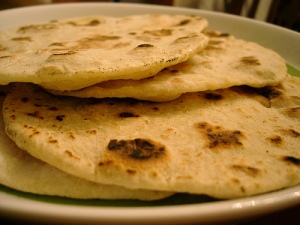
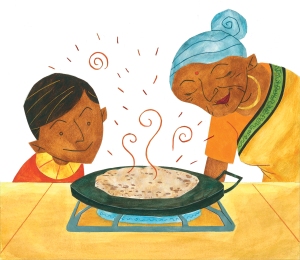
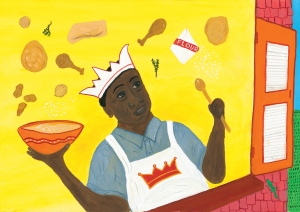
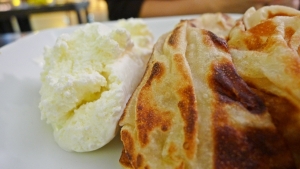







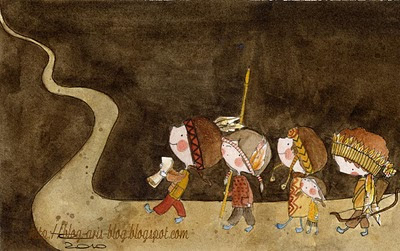
Hey there!
Quite a nice post this was. Except, if I may suggest, in India at least, roti’s aren’t generally stuffed at all. It’s parathas, another kind of bread that’s often stuffed.
But no matter. A nice post indeed.
Peace.
Kabir
Hi Kabir,
Thanks for the correction! I’ve had stuffed parathas before, and they are DELICIOUS.
No problem! I absolutely, totally love parathas myself! And somehow no one can seem to make them as well as my mother does.
Came across your post while I was looking for a drop of inspiration for my own post. Something which basically tells you how to make chicken biryani at home. It’s done, finally.
P.S.: Have you had chicken biryani before?
Peace.
Kabir
Hi Kabir,
Haven’t had chicken biryani before, but will check out your recipe. Thanks for sharing!
Hannah
Kabir
Kabir,
I LOVE Biryani! My friend Aravind has a great recipe. I just made Saag Paneer last night… a family favorite!
http://michellecusolito.blogspot.com/2011/07/saag-paneer-cheese-in-spinach-sauce.html
Hannah, I look forward to reading this book and trying out the recipe!
When I wrote Drummer boy of John John I was dreaming of the Caribbean and the music and the taste of a delicious roti. This post has brought back those beautiful sundrenched aromas and the Roti King’s famous chicken roti.. with secret herbs and spices!
Thanks Hannah
Mark